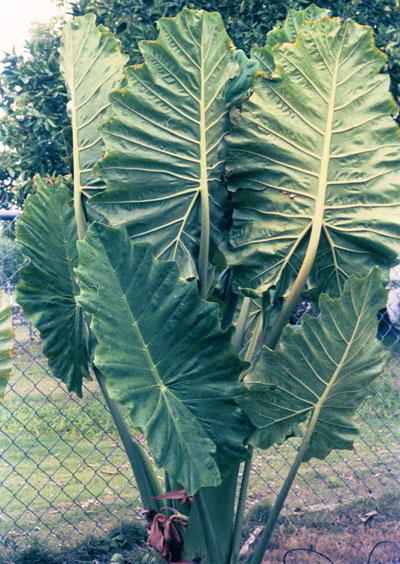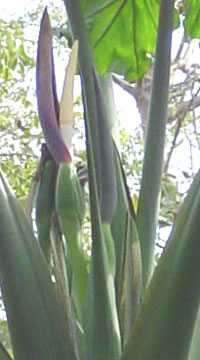

Alocasia x portora
Alocasia x portora is the name I gave to the progeny of the cross of Alocasia odora and Alocasia portei. One seedling selection of this plant is often sold erroneously as "portadora", "portodora", "portidora", or "Portore". We did not choose that selection for the market, as we have a much better selection that we intended to release in our own time.
The top picture at right is a specimen of Alocasia x portora grown at our facility. Overall this plant is more than 5 feet tall and growing in the ground. This particular selection is from the group we call "Portora Green", so named because the petioles and main leaf veins are green. This is not true of the "Portora Red", where the petioles and main veins are of a maroon or reddish coloration.
The second picture shows a typical inflorescence produced by a "Portora Red". Note particularly the coloration of the spathe, which is another reason for describing these as "Portora Red".
How large can these plants grow? Click here to see an example of this plant grown to exceptional size.
The "Portora Green" has none of the coloration seen in the "Portora Red"; some of the green selections have spadices with orange tips, which is a surprise because neither of the parents exhibit coloration of that type.
We have decided to apply the name, "Thunder Waves", to our chosen selection from the Portora Red group. Should our selection go on the market, you will be able to know it by this name rather than by the valid published name "Alocasia x portora" or the invalid variants of that name ("portidora", "portadora", "portodora").
We have discovered that some selections of Alocasia x portora do produce pollen, and we continue working with that pollen in our effort to produce the next iteration of this type of plant.
| In the Field | The Species | Fruiting |
| The Hybrids | Obtaining Our Plants |